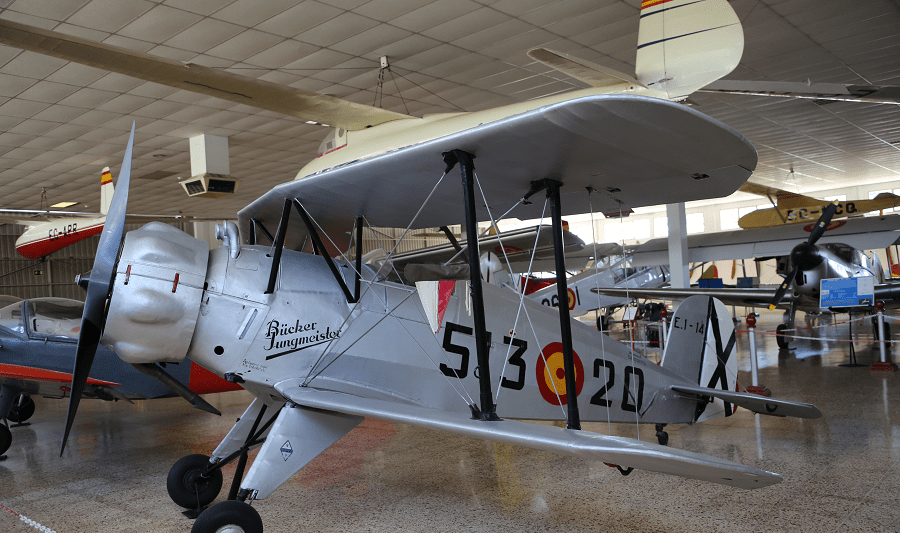The Bücker Bü 133 Jungmeister was an advanced trainer of the Luftwaffe in the 1930s. It was a single-engine, single-seat biplane of wood and tubular steel construction and covered in fabric.
The Bü 133 was a development of the Bücker Bü 131 Jungmann two-seat basic trainer. First flown in 1935 (by Luise Hoffmann, the first female pilot in Germany), it was slightly smaller than the Bü 131. The prototype, D-EVEO, was powered by a 140 hp (104 kW) Hirth HM506 inverted, air-cooled inline-6 engine.
The aircraft showed “astonishing agility” at its first public appearance, the 1936 International Aerobatic Championship at Rangsdorf, but the Bü 133A garnered no orders; only two Bü 133Bs, with 160 hp (119 kW) Siemens-Halske Sh.14A-4 radial engines, were built.
The main production type was the 160 hp (119 kW) Siemens-Bramo Sh 14A radial powered Bü 133C, which had a distinctive cowling and a 13 cm (5.1 in)-shorter fuselage, and the same fine aerobatic performance as the Bü 133A.
Fifty-two were manufactured under licence by Dornier Flugzeugwerke for the Swiss Air Force (which kept it in service until 1968). Twenty five Jungmeisters, initially powered by Hirth HM506 engines, were licence-built for the Spanish Air Force from 1940–42 by CASA with the designation CASA 1-133L, although they were later re-engined with Sh 14 engines. They joined the survivors of 22 German-built Bü-133Cs in Spanish service.
In the 1960s, the American pilot Jack Canary obtained construction plans for the Bü-133 from Spain and a production licence from Carl Bücker, with the intention of restarting production of the Jungmeister in Germany to meet an expected high demand from the USA.
The first new-build aircraft was completed by the Wolf Hirth factory at Nabern being completed in 1968. Jack Canary was killed later that year during the production of the film Tora! Tora! Tora!, however, and his death caused the project to lose momentum, with poor sales (partly due to the high cost of the new-build aircraft together with the availability of ex-Swiss Jungmeisters on the civil market) caused Hirth to stop production in 1971 after four aircraft has been built. Several aircraft were later completed from components built during this project, with two aircraft built in Austria in the 1970s, one built in France in 1991 and another completed by Hirth in 1991.
National origin: Germany
Manufacturer: Bücker, CASA, Dornier
Primary users: Luftwaffe, Spain, Switzerland
Number built: 250












